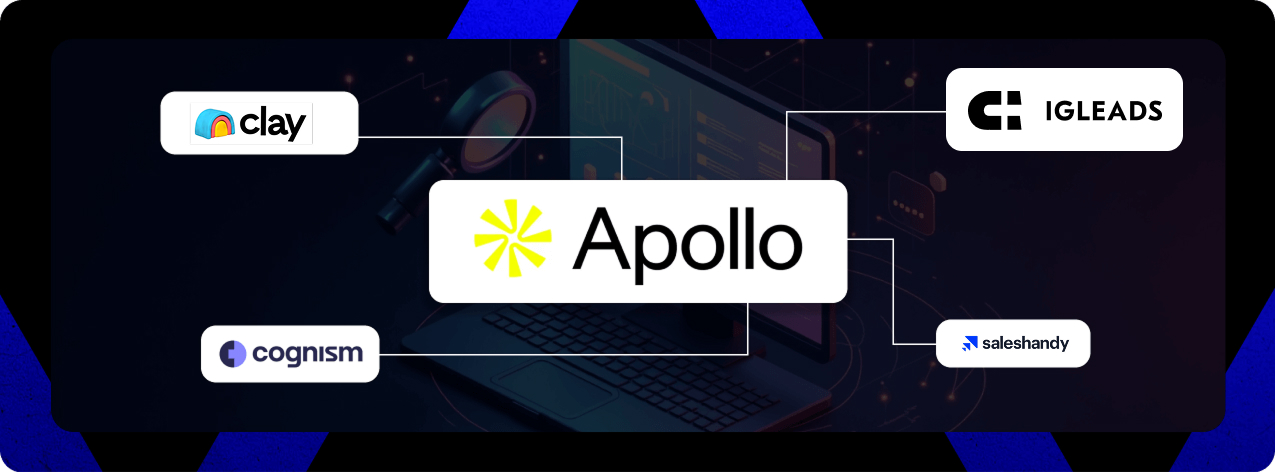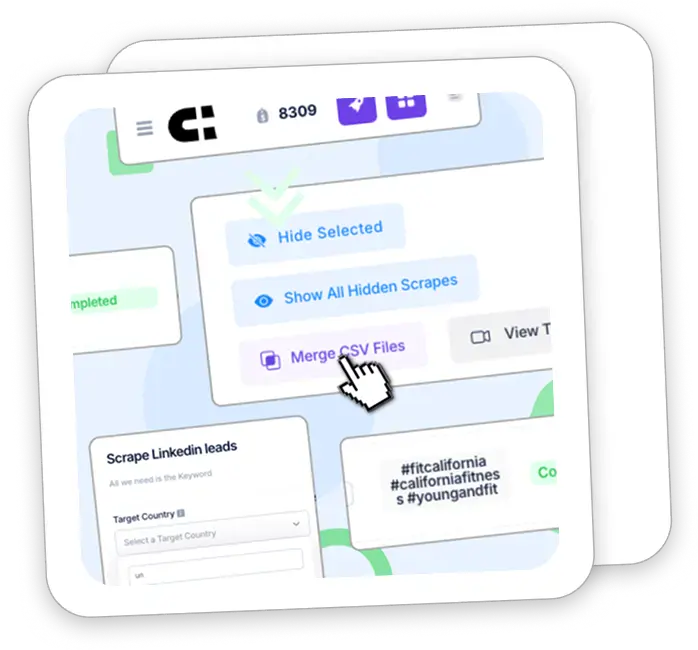Boost Your Business: Buy Leads for Instant Growth
Buy Leads – Lead generation fuels B2B sales in today’s fast-paced business world. Companies seek ways to grow and outpace competitors. Buying leads is a powerful strategy for quick business expansion.
Lead acquisition can transform businesses aiming for rapid growth. Purchasing high-quality leads lets companies skip time-consuming organic lead generation. This approach speeds up the sales cycle and boosts revenue growth.
B2B marketers often struggle with lead generation. Buying leads provides quick access to qualified prospects. This method can revolutionize your sales pipeline and increase profits.
Key Takeaways
- Lead generation is crucial for B2B sales success
- Buying leads can accelerate business growth
- Quality leads are essential for effective sales conversion
- Purchased leads can provide instant access to potential clients
- Lead acquisition strategies can significantly impact revenue
Understanding the Power of Lead Generation
Lead generation is crucial for B2B marketing success. It powers your sales funnel and drives customer acquisition. Let’s explore key aspects of lead generation and its impact on business growth.
Defining B2B Sales Leads
B2B sales leads are potential customers interested in your products or services. These businesses might benefit from what you offer. Identifying and nurturing these leads is vital for filling your sales pipeline.
The Importance of Quality Leads
Lead quality is crucial for sales success. High-quality leads are more likely to convert, saving time and resources. They have a real need for your product and decision-making authority.
Lead Generation Challenges in B2B Marketing
B2B marketing faces unique lead generation challenges. These include:
- Identifying the right decision-makers within target companies
- Creating compelling offers that resonate with business needs
- Nurturing leads through a complex and often lengthy sales funnel
- Standing out in a crowded marketplace
Overcoming these challenges requires a strategic approach. It involves understanding your target audience and crafting tailored messages. Leveraging multiple channels to reach potential customers is also key.
| Lead Generation Method | Effectiveness | Cost |
|---|---|---|
| Content Marketing | High | Medium |
| Social Media Advertising | Medium | Low-Medium |
| Email Marketing | High | Low |
| Trade Shows | Medium-High | High |
Mastering lead generation can boost business growth and revenue. It’s a critical part of B2B marketing that needs constant improvement. Adapting to market changes is essential for success.
Why Buying Leads Can Accelerate Business Growth
Lead purchasing is a game-changer for businesses seeking rapid expansion. It provides quick access to potential customers, eliminating time-consuming prospecting. Companies can fast-track their sales and tap into new markets with precision.
Buying leads allows businesses to focus on specific industries or decision-maker roles. This targeted approach often leads to higher conversion rates. It also ensures more efficient use of resources.
Companies can quickly enter new markets by leveraging purchased leads. They can start with a list of potential clients likely interested in their offerings. This approach is faster than building a customer base from scratch.
“Purchased leads are like rocket fuel for your sales team. They provide a direct path to potential customers, allowing you to focus on closing deals rather than searching for prospects.”
Lead purchasing significantly impacts sales acceleration. Sales teams can spend more time engaging with qualified prospects. This leads to shorter sales cycles and increased revenue.
The efficiency boost is valuable for businesses looking to scale rapidly. It’s particularly useful for companies aiming to meet aggressive growth targets.
- Immediate access to potential customers
- Highly targeted approach for better conversion rates
- Quick entry into new markets
- Efficient use of sales and marketing resources
Integrating purchased leads into growth strategies can yield faster results. It can also give businesses a competitive edge in their industry. Success depends on selecting high-quality leads and effective follow-up strategies.
Types of Leads You Can Purchase
Lead types are key to qualifying leads and managing your sales pipeline. Each lead type represents a different stage in the customer journey. Let’s explore the main types of leads you can buy to grow your business.
Marketing Qualified Leads (MQLs)
MQLs have shown interest in your marketing efforts. They’ve engaged with your content but aren’t ready for sales calls yet. These leads are at the top of your sales funnel.
Sales Qualified Leads (SQLs)
SQLs have taken actions showing they want to become customers. They’re further along in the customer journey and ready for sales outreach. These leads are more likely to convert, making them valuable.
Product Qualified Leads (PQLs)
PQLs have used your product and shown interest in paid features. They know your offering and have seen its value firsthand. Companies with freemium models or free trials often find these leads.
Service Qualified Leads
Service qualified leads want to become paying customers. They may be current customers looking to upgrade or expand their services. These leads express interest directly to your service team.
| Lead Type | Stage in Customer Journey | Primary Nurturing Strategy |
|---|---|---|
| MQLs | Awareness | Educational content |
| SQLs | Consideration | Direct sales outreach |
| PQLs | Evaluation | Product demos and trials |
| Service Qualified | Retention/Expansion | Personalized service offerings |
Knowing these lead types helps you tailor your approach. You can optimize your sales pipeline for better results. This knowledge will boost your business growth.
The Process of Buying Leads
Acquiring leads involves several steps to get high-quality contacts for your business. Let’s explore the key stages in this process.
First, find trustworthy lead providers. Check their track record and client reviews. Then, set your target criteria to focus on leads likely to convert.
Next, buy relevant contact information from your chosen provider. Verify each lead’s accuracy and completeness to maintain data quality.
Import the new leads into your CRM system. This step allows for smooth follow-up and tracking of potential customers.
“Quality over quantity is key when buying leads. Verify each lead to ensure you’re not wasting time on outdated or incorrect information.”
Align your lead buying strategy with your marketing and sales goals. This ensures the leads you get fit your business needs.
Finally, follow data protection rules. Stick to regulations when buying and using lead data to avoid legal problems.
| Step | Action | Importance |
|---|---|---|
| 1 | Find reputable providers | Ensures reliable lead sources |
| 2 | Define target criteria | Narrows focus to relevant leads |
| 3 | Purchase contact information | Acquires potential customer data |
| 4 | Verify lead quality | Maintains data accuracy |
| 5 | Integrate leads into CRM | Facilitates effective follow-up |
Strategies to Maximize ROI When You Buy Leads
Buying leads can boost your business growth quickly. Smart strategies are key to maximizing your return on investment. Let’s explore effective ways to get the most from your purchased leads.
Targeted List Generation
Set specific criteria for lead purchases to ensure relevance. Focus on demographics, company size, and industry that match your ideal customer profile. This approach improves lead quality and boosts conversion rates.
Personalized Outreach
Craft messages based on lead characteristics. Personalization increases engagement and fosters meaningful connections. Use data-driven insights to create content that speaks to each lead’s unique needs.
Multi-Channel Approach
Use an omnichannel marketing strategy to reach leads effectively. Employ various communication methods like email, phone calls, and social media. This diverse approach helps you connect with leads on their preferred platforms.
| Strategy | Benefits | Implementation Tips |
|---|---|---|
| Lead Nurturing | Builds trust and increases conversion rates | Develop a series of targeted content pieces |
| ROI Optimization | Maximizes return on lead investment | Track and analyze key performance metrics |
| Personalization | Improves engagement and response rates | Use lead data to customize outreach efforts |
These strategies will boost the effectiveness of your purchased leads. Keep testing and refining your approach for the best results. Your efforts will pay off in improved lead conversion rates.
Integrating Purchased Leads into Your Sales Funnel
Integrating purchased leads into your sales funnel is crucial for maximizing your investment. Effective lead management and smooth CRM integration are key. These steps can streamline your sales process and boost conversion rates.
Start by importing purchased leads into your CRM system. This centralizes data management and simplifies lead interaction tracking. Implement lead scoring to prioritize follow-ups based on quality and buying readiness.
Develop a structured nurturing process for purchased leads. Create automated email sequences that provide value and build trust. Personalize your outreach to address specific pain points and offer solutions.
- Align sales and marketing teams for consistent messaging
- Use lead scoring to prioritize high-potential leads
- Create personalized nurturing sequences
- Regularly analyze lead performance to refine processes
CRM integration provides a complete view of each lead. This enables targeted communications from your team. Analyze lead performance metrics regularly to identify trends and optimize your strategy.
“Effective integration of purchased leads can significantly accelerate your sales cycle and drive business growth.”
By following these strategies, you can seamlessly incorporate purchased leads into your funnel. This approach maximizes their potential for driving revenue growth.
Measuring Success: Metrics to Track After Buying Leads
Performance metrics are key to evaluating your lead buying strategy. They help you assess investment effectiveness and optimize marketing efforts. Analyzing these indicators allows for data-driven decision-making.
Conversion Rates
Conversion rates show how many purchased leads become customers. High rates indicate effective lead quality assessment. Track this metric to improve your sales funnel.
Cost Per Lead
Cost per lead reveals your lead acquisition strategy’s financial efficiency. It’s crucial for ROI measurement and budget allocation. Monitor this figure to ensure cost-effective lead buying. Buy Leads
Customer Lifetime Value
Customer Lifetime Value (CLV) measures converted leads’ long-term value. It’s vital for assessing lead buying’s impact on business growth. Use analytics tools to calculate CLV for informed future purchases. Buy Leads
| Metric | Importance | Calculation Method |
|---|---|---|
| Conversion Rate | Measures lead quality | (Number of conversions / Total leads) x 100 |
| Cost Per Lead | Determines financial efficiency | Total lead cost / Number of leads acquired |
| Customer Lifetime Value | Assesses long-term impact | Average purchase value x Purchase frequency x Customer lifespan |
Regularly monitor these metrics to refine your lead buying strategies. This practice helps maximize marketing ROI. Consistent reporting and analysis lead to improved lead generation efforts.
Complementary Strategies to Enhance Bought Leads
Buying leads is just the beginning. To maximize their potential, you need to implement complementary strategies. Content marketing is crucial for providing value and building trust with purchased leads.
Create informative blog posts, whitepapers, and case studies. These should address your leads’ pain points and showcase your expertise. This approach helps nurture leads and keeps your brand top-of-mind.
Social media engagement strengthens relationships with your leads. Share your content and interact with followers. Join industry discussions to increase your visibility and credibility.
Email marketing is essential for effective lead nurturing. Craft personalized campaigns that deliver relevant content based on each lead’s interests. Automated drip campaigns can guide leads through the buyer’s journey efficiently.
- Develop targeted content for different stages of the sales funnel
- Use social media to showcase your expertise and engage with leads
- Create personalized email sequences to nurture leads over time
Lead nurturing is an ongoing process. Educate your sales team on effective techniques for engaging with purchased leads. This balanced approach increases your chances of converting leads into loyal customers.
“The key to successful lead nurturing is to provide value at every touchpoint, building trust and positioning your brand as the go-to solution in your industry.”
Conclusion: Leveraging Purchased Leads for Sustainable Growth
Buying leads can boost your business scaling efforts. It’s a powerful tool for customer acquisition. Smart nurturing tactics can help your sales pipeline grow rapidly.
Focus on lead management best practices to maximize your investment. Regularly assess and refine your processes based on data. Monitor metrics like conversion rates and cost per lead.
Purchased leads are just one part of a successful strategy. Integrate them into your broader marketing plan. This approach will help optimize sales and drive sustainable growth.
Use data-driven decision-making in your lead management. This will help you improve sales processes and increase conversions. With the right strategy, purchased leads can propel your business forward.
FAQ
What are B2B sales leads?
B2B sales leads are potential clients for salespeople to contact. These contacts have shown interest in a company’s products or services. They are prospects that salespeople can approach directly. Buy Leads
Why is lead quality important?
Quality leads are vital for effective sales processes. They result in higher conversion rates and better resource use. Increasing lead volume without proper qualification can be counterproductive.
What are the benefits of buying leads?
Buying leads provides quick access to potential customers. It saves time and resources in prospecting. Purchased leads can be highly targeted to specific industries or roles.
What are the different types of leads you can purchase?
Common types include Marketing Qualified Leads (MQLs) and Sales Qualified Leads (SQLs). Product Qualified Leads (PQLs) and Service Qualified Leads are also available. Each type represents a different stage in the customer journey.
How can I maximize ROI when buying leads?
Use targeted list generation and personalized outreach. Employ a multi-channel approach and continuously test your methods. Seamlessly integrate purchased leads into your sales funnel for best results.
How do I integrate purchased leads into my sales funnel?
Add purchased leads to your CRM system. Use lead scoring to prioritize follow-up efforts. Develop a structured nurturing process for these leads.
Align sales and marketing teams for consistent messaging. This ensures effective follow-up strategies for all purchased leads.
What metrics should I track after buying leads?
Track conversion rates, cost per lead, and customer lifetime value. Use data analytics tools to gain insights into lead performance. These metrics help optimize future purchasing decisions. Buy Leads
What complementary strategies can enhance bought leads?
Use content marketing to engage with leads. Interact on social media platforms for better connections. Implement email marketing for targeted follow-ups and nurturing campaigns. Buy Leads
Develop a comprehensive lead nurturing strategy. This guides purchased leads through your sales funnel effectively. Buy Leads
Source Links
- The 32 Best Ways to Generate More B2B Sales Leads – https://www.rollworks.com/resources/blog/b2b-sales-leads-the-32-best-ways-to-generate-more-leads
- Lead Generation: A Beginner’s Guide to Generating Business Leads the Inbound Way – https://blog.hubspot.com/marketing/beginner-inbound-lead-generation-guide-ht
- Instant Leads Hack Review: Get Hot, Ready-to-Buy Leads in 3 Minutes – https://www.linkedin.com/pulse/instant-leads-hack-review-get-hot-ready-to-buy-3-minutes-emad-selim-hdypf
Explore more lead generation strategies and tools
- B2B Lead Generation Solutions – Guide for 2025
- How to Build a High-Quality B2B Email List for Outbound Marketing
- Buy Email Lists for Marketing in 2025: Complete Guide to Business Leads
- Why Scrape Google Maps? Use Cases for Sales, Marketing & SEO
- B2C Lead Generation: The 2025 Playbook
- 15 Best Lead Generation Companies for 2025
- Best B2B email list providers in 2025
- Top Lead Generation Agencies Compared (2025)
- 18 Best B2B Lead Generation softwares in 2025
- Lead Generation Guide: Strategies & Tools for 2025
Find your email list by industry
- Get Fresh Veterinarians Email List 2025
- Get Fresh Chief Revenue Officers Email List 2025
- Get Fresh Banking Email List 2025
- Get Fresh Real Estate Email List 2025
- Get Fresh VP Email List 2025
- Get Fresh Retail Industry Email List 2025
- Get Fresh Chief Sales Officer Email List 2025
- Get Fresh Hospitals Email List 2025
- Get Fresh Healthcare Email List 2025
- Get Fresh Restaurant Email List 2025
- Get Fresh Chiropractors Email List 2025
- Get Fresh Hotels Email List 2025
- Get Fresh COO Email List 2025
- Get Fresh Contractors Email List 2025
- Get Fresh IT Decision Makers Email List 2025
- Certified Public Accountants Email List 2025
- Get Fresh Real Estate Agents Email List 2025
- Get Fresh Insurance Agents Email List 2025
- Get Fresh Mining Industry Email List 2025
- Get Fresh Chief Information Officers Email List 2025
- Get Fresh Pharmacists Email List 2025
- Engineers Email List: Reach Your Target Audience with Precision
- Get Fresh Mortgage Brokers Email List 2025
- Get Fresh HR Email List 2025
- Get Fresh Attorneys Email List 2025
- Oil And Gas Industry Email List 2025
- Chief Marketing Officer Email List 2025
- Email Extractor Ultimate Guide 2025
- CFO Email List – Get Targeted CFO Contacts in 2025
- How to Get a Homeowner Mailing List in 2025?
- Realtor Email List 2025
- Dentists Email List 2025
- Get Fresh CEO Email List 2025
- Marketing Directors Email List: How to Build and Use One for Your Business




